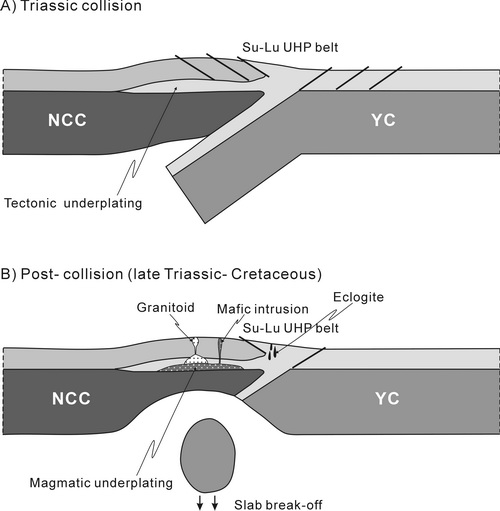Neoproterozoic zircon inheritance in eastern North China Craton Mesozoic igneous rocksUpdate time:12 12, 2011
Vice Professor MIAO Laicheng and his team find neoproterozoic zircon inheritance in eastern North China Craton (NCC) Mesozoic igneous rocks, which were initially derived from the Yangtze/South China block, rather than from the NCC itself. The mechanism that introduced these zircons into the NCC was likely tectonic underplating during Triassic continental subduction/collision of the Yangtze block beneath the NCC. The addition of abundant crustal materials represented by the exotic zircons probably along the Moho or weak interfaces within the NCC crust led to the crustal thickening of the NCC. These sialic materials contributed significantly to the Mesozoic igneous rocks, either as source rocks or as contaminants of magmas generated during an extensional environment following crustal thickening. Crustal thickening was spatially linked to lithospheric thinning, with both occurring mainly in the eastern segment of the NCC, suggestive of an intrinsic relationship between thickening and thinning events during Mesozoic evolution of the NCC.
Figure 1. A possible tectonic model for the collision between the NCC and the Yangtze craton (YC), which is used to explain the derivation of Neoproterozoic zircons detected in eastern NCC Mesozoic igneous rocks (see text for details). (A) Crustal thickening by tectonic underplating during the collision and subduction of the Yangtze; (B) lithospheric thinning in the post-collisional/thickening setting. (Image by MIAO) Miao et al. Neoproterozoic zircon inheritance in eastern North China craton (China) Mesozoic igneous rocks: derivation from the Yangtze craton and tectonic implications. International Geology Review. 2011, 53 (1): 1464-1477 (Download Here)
|
Contact
Related Articles
Reference
|
-
SIMSSecondary Ion Mass Spectrometer Laboratory
-
MC-ICPMSMultiple-collector ICPMS Laboratory
-
EM & TEMElectron Microprobe and Transmission Electron Microscope Laboratory
-
SISolid Isotope Laboratory
-
StIStable Isotope Laboratory
-
RMPARock-Mineral Preparation and Analysis
-
AAH40Ar/39Ar & (U-Th)/He Laboratory
-
EMLElectron Microscopy Laboratory
-
USCLUranium Series Chronology Laboratory
-
SASeismic Array Laboratory
-
SEELaboratory of Space Environment Exploration Laboratory
-
PGPaleomagnetism and Geochronology Laboratory
-
BioMNSFrance-China Bio-mineralization and Nano-structure Laboratory

 Print
Print Close
Close
